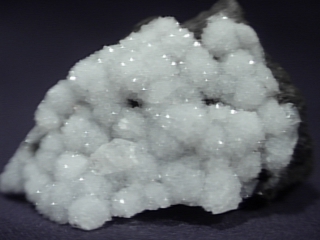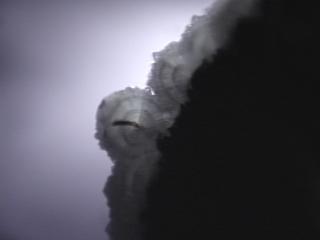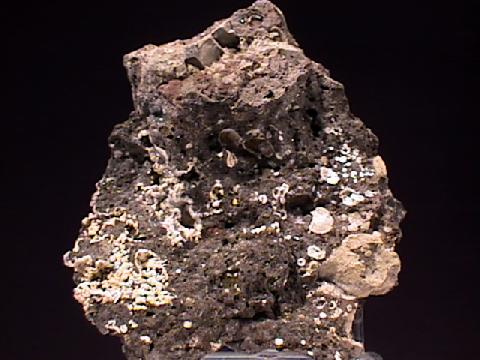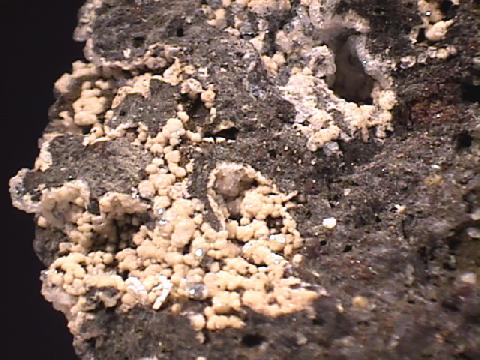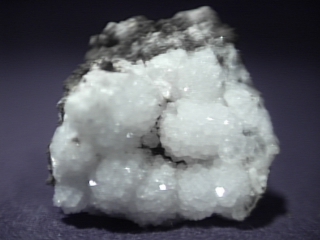
PHILLIPSITE
Specimen phi-2
$ 40.00
Dims: 1.6" x 1.5" x 0.9"(4.1 x 3.8 x 2.3 cm)
Wt: 28.1 g
Dough Boys Mine, Tasmania, Australia
This Phillipsite specimen consists of a crust made up of several white, rounded, intergrown clusters of crystals. The largest of these clusters measures 0.5"(1.3 cm) in dimeter and rises about 0.2"(5 mm) out of the base rock. Some of the clusters on the edge of the specimen are broken, revealing their cross-sections; these cross-sections show the acicular, radiating habits of these crystals. Unlike another specimen that I have seen, these thin crystals seem to have terminations that are proportionate to their thicknesses. There are a few larger, stubby crystals that average about 0.1-0.2"(3-5 mm)in diameter and are colorless and transparent, whereas the round white clusters are translucent. All have a vitreous luster and good form, with very little damage, except for the clusters on the specimen's edge, of course. The crust that this material has formed rests on a base of basalt that contains many loose, round nodules which are paler and more green in color than their matrix. There are also a few rounded, transparent nodules made up either of a different zeolite or, more likely, quartz.

